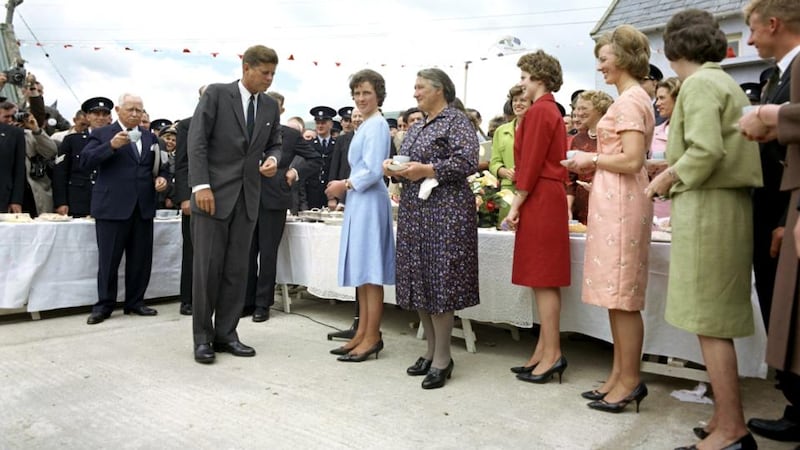When his cousin Mary Ryan served him a cup of tea in the courtyard of her modest farmhouse in 1963, this was the true moment of homecoming for the US president, John F Kennedy.
In the archive photographs, Mary Ryan appears oblivious to the crush of Kennedy’s entourage, journalists, secret service men and extended family members, as she presides over a cloth-covered table with a silver tea service, china plates and a “special occasion” cake. She seems sternly composed, but after that cup of tea, her life would never be the same.
“They were very innocent people. My grandmother was naive,” says Patrick Grennan, who grew up on the homestead in Dunganstown, New Ross, Co Wexford, and lives there today with his wife, Siobhán Clifford, and two young boys Éanna (three) and Donagh (five). “We are more aware of the media now, but in the early 1960s they had no TV and would not have known what the JFK visit entailed.”

The day itself was “fantastic” for the Irish Kennedy cousins, but soon there were two-mile queues on a Sunday to get on to the farm. “All I can remember is her shrugging her shoulders and making sure she wasn’t seen,” Grennan says.
Mary Ryan before 1963 had always run an open home, but “felt stressed” when journalists hid outside seeking stories and thousands of Americans and Europeans roamed uninvited around the farm, demanding her time. These people were intruders, treating the homestead as public property and the farm became impossible to run productively.
“They were prisoners in their own home well into the 1970s,” Grennan says.
When the Ryans opened a small souvenir shop, in an attempt to compensate, local begrudgers accused them of exploiting their famous relations. “If it was me, I would have put a charge on the gate, but she felt half-guilty about charging for a souvenir,” he says.
Mary was 64 in 1963 and had three children, two of them still living then – Josie, who would become Patrick Grennan’s mother, and Mary Anne, his future aunt. Mary Anne, who was 24, JFK took a shine to, saying that she looked “like a Kennedy”, which she did. So much so that in archive photos she has been mistaken for a Kennedy.
When Grennan was four in 1979, his mother Josie died and in 1985, his father passed away. Mary Anne, who was “half a celebrity” due to the Kennedy connection and at the age of 24 had attended JFK’s funeral, was a nurse in the Rotunda but returned home to rear Patrick and his sister, and never married or worked as a nurse again.
“She is now on a stamp pouring tea for the president,” he says.
While Mary, Mary Anne and Josie were still alive, Jacqueline Kennedy, the president’s widow, brought her children, Caroline and John, on a private visit to the homestead in 1967, reinforcing its significance to the US branch of the family. Caroline Schlossberg will, with the Taoiseach, officially open the homestead on June 22nd.
















